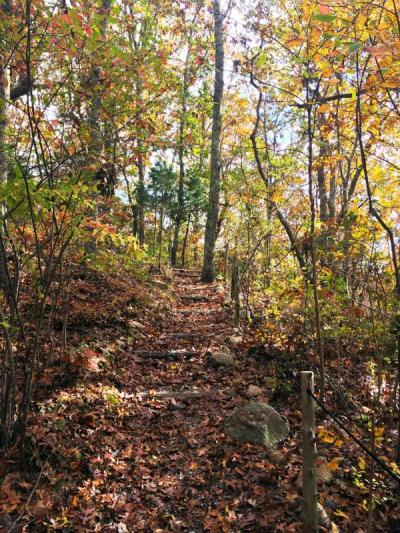Gearing Up for the holiday season at the Lloyd Center for the Environment by Adeline Bellesheim, Lloyd Center for the Environment Educator/Naturalist
Preparations for the most wonderful time of the year look a little different at the Lloyd Center for the Environment. The leaves are changing to their brightest and most colorful form and the staff have their rakes handy waiting for the red maple leaves to fall to the ground. Everyone begins to bundle up as the temperatures drop at our coastal property. However, as offices around the country are filled with chatter about where to hang garland or if it’s too soon to light an apple spice candle, the Lloyd Center is occupied with conversation about migration and hibernation.
That’s right folks, it’s that time of year again. Not for wrapping presents and decorating trees, but to say farewell to many of our favorite creatures. Although the estuary is beautiful when the cordgrass is covered in snow, it is not the most suitable place for all of the sea creatures to spend their winter. The red and orange forest is a peaceful place, but it is far too cold for some of our woodland friends. This means our residents have to find a warm, sunny place for a migration vacation, or they must begin stocking up their resources to ride out the season.
The winter is a stressful and harsh time for those living in our estuary. With the cold comes many severe storms that carry strong waves, which can erode away the sediments and mud flats that are typically used for protection. Although many of our friends leave the estuary during these cold months for deeper and warmer water, some are not fazed by the freezing temperatures. The algae residing in the water continue to reproduce year-round, supplying food and nutrients to the marsh. Other plants, such as eel grass, use the winter to briefly go dormant and rest until the spring rolls around.
Outside of the water, the animals need to prepare themselves for a lack of food and resources. Just like humans, animals begin to go on a feeding frenzy around the holidays in order to fatten up. They search for foods with high fat content to consume in order to create a solid fat layer to protect them against the cold. Animals that are still active throughout the winter months, such as deer, coyotes, and turkeys, must continue to search for food despite icy and snowy conditions. The cold causes deer to adapt and change their digestive system so that they can consume twigs and barks for energy. Other animals, such as bears and woodchucks, use the winter to hibernate in a protected home. Woodchucks lower their core body temperature and decrease their heartbeat in order to slowly burn stored fat throughout the winter. Some small mammals create tunnels to insulate from the cold, find grass from the previous year, and avoid dangerous predators.
At the Lloyd Center we do our best to help the creatures ride out the winter. The staff is careful to always keep the birdfeeders filled up for our avian friends. This provides food for the resident bird species who are here year-round, and for the ones who are migrating here from further north. We use heat lamps and lights to make sure our friends in tanks are able to stay warm enough, and stock up on plenty of food. Some of us at the Lloyd Center enjoy the cold, while others bundle up and wish for summer weather. Just like the creatures here, we all handle the holiday season differently!













